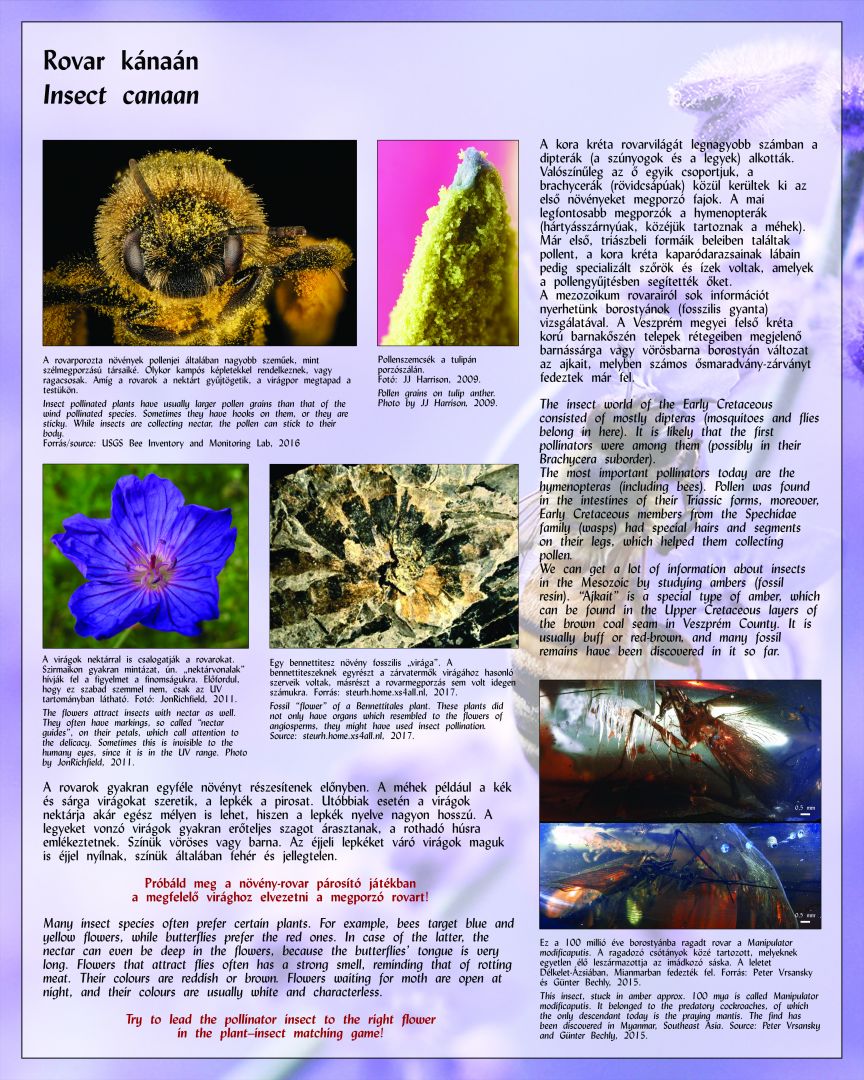FLYING, RESEARCH AND PLANTS - 3. view /
Insect canaan
The insect world of the Early Cretaceous consisted of mostly dipteras (mosquitoes and flies belong here). It is likely that the first pollinators were among them (possibly in their Brachycera suborder).
The most important pollinators today are the hymenopteras (including bees). Pollen was found in the intestines of their Triassic forms, moreover, Early Cretaceous members from the Spechidae family (wasps) had special hairs and segments on their legs, which helped them collecting pollen.
We can get a lot of information about insects in the Mesozoic by studying ambers (fossil resin). “Ajkait” is a special type of amber, which can be found in the Upper Cretaceous layers of the brown coal seam in Veszprém County. It is usually buff or red-brown, and many fossil remains have been discovered in it so far.
Many insect species often prefer certain plants. For example, bees target blue and yellow flowers, while butterflies prefer the red ones. In the case of the latter, the nectar can even be deep in the flowers, because the butterflies’ tongue is very long. Flowers that attract flies often have a strong smell, reminding that of rotting meat. Their colours are reddish or brown. Flowers waiting for moths are open at night, and their colours are usually white and characterless.
Insect-pollinated plants have usually larger pollen grains than that of wind-pollinated species. Sometimes they have hooks on them, or they are sticky. While insects are collecting nectar, the pollen can stick to their body.
The flowers attract insects with nectar as well. They often have markings, so-called “nectar guides”, on their petals, which call attention to the delicacy. Sometimes this is invisible to the human eyes since it is in the UV range.
